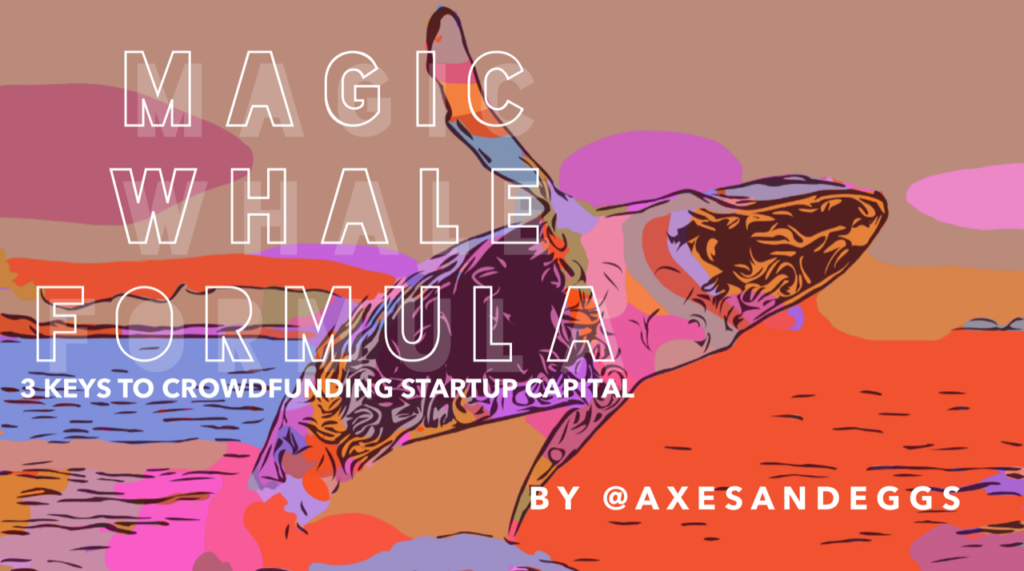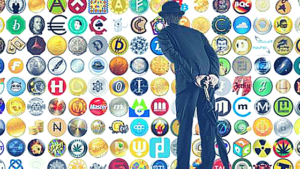The 3 key ingredients for attracting investors to your crowdfunding (ICO/STO) campaign
Below is a redacted and slightly edited and updated version of a memo provided to a client regarding how to attract investors to their business, in mid 2017. For background, they’re a 5 year old private investment firm, whose stock is traded OTC and who invest in startups focused on blockchain tech. To further this model they were exploring additional ways to raise capital, specifically to acquire more startups. Below is a high level framework of what investor “whales” are looking for. This is not investment advice. These are redacted insights into what you should be considering if you’re looking to also engage potential investors in your business enterprise.
If you don’t have time to read it all, I’ll summarize: It still takes money to make money.
Note — all crowdfunding campaigns (regardless of if you call them ICOs / STOs) require a legitimate business model, tangible solutions to real problems, market size worth investing in and the potential for 100x returns. Otherwise, whales aren’t interested in 10x returns.
Samson Williams, Principal, Axes and Eggs
Magic Whale Formula: Online presence + In person Conferences + 100x return potential + Influencers = Investors (Whales)
Online presence — A strong online presence is needed in effort to build awareness of your business and business model. A strong presence is also required as upwards of 90% of your online followers will be either bots or individuals who you have in fact paid to follow you. Bounty programs don’t generate actual clients/customers. Of the 10% remaining, less than 10% of those will take action to directly invest in your business. However, early and passionate adopters are needed to help attract and grow fast followers.
Conferences and Fast Followers — In person appearances at conferences are needed to build
- Awareness and
- Trust
People simply do not invest in people they are not aware of (duh) and don’t like. If someone does not like you, they cannot trust you. People only engage and do business with people they know, like, then trust. For instance,
when is the last time you bought something from someone you didn’t know and trust?
Influencers — ICOs and STOs are simply crowdfunding. However, in this paradigm of crowdfunding it is not based on the delivery of goods, products and services. Rather, participation in ICOs/STOs is predicated on the expectation of the future delivery of goods, products and/or services. There are no blockchain products/services currently on the market. In this ecosystem of hype, Influencers play a key role as the trusted voices within the community. Whether or not they should be trusted is moot. Influencers (e.g. Ian Balina, Suppoman, DecentralizedTV etc…) role in the ICO/STO ecosystem is to provide what seems to be rational / quantitative analysis of blockchain based projects. However, because no actual DLT projects exist, they are in fact mere purveyors of opinion, on the future of research and design in the application of DLT technologies. But — people like them. They embody and project the essence of “success”, despite the clear lack of any empirical evidence of success beyond the ability to pump and dump a given crypto/project. Despite the lack of products and evidence of success, people like Influencers and they trust their opinions. So much so, they give them their money.
In conclusion, Humans don’t trust data. Humans trust how they feel about other humans.
Approval, mention or investment by Influencers in the crypto/blockchain space, as trusted members of the community, are a prerequisite of having accredited & institutional investors participate in your crowdfunding offering. As without their involvement it is highly unlikely that anyone will a) know your offering exists b) like it c) get excited enough to engage you and d) trust you enough to give you their money.
Lastly, don’t forget that in all cases you need to show:
- What problem the business is resolving
- How the solution is unique
- How business will make its first dollar and when
- What the return/profitability of the investment will be
- Admit you’re issuing a security (whether its called an ICO/STO) and follow all applicable securities laws
Minimum 100x ROI Potential
You’ve got to show that these businesses have a 100x return potential. Anything less really isn’t worth the paperwork for whales. The shorter the return window the better. Keeping in mind securities laws.
So What ?
Options for achieving the magic for attracting whales in ICO/STO crowdfunding projects:
Option A - Pay an influencer. Up front cost of $$$ — $$$$$ minimum + $100k to $1M for listing on an exchange (Reminder — this was written in mid 2017 and figures are not reflective of 2019 market conditions)
Option B - Become an influencer. $$$ — $$$$$, plus a two year process. Hit or miss. As you will need to establish credibility thru investing in crowdfunding deals that 10x or greater, as well as.
Option C - Support an influencer. $$ — $$$. Two to three month process. Identify a lesser known influencer and form a strategic partnership to support growth of their brand. With the clear deliverable that they support your crowdfunding initiative when you do it.
Option D - Make an influencer. $$ — $$$$$. Two + year process. Identify someone who has the bonafides and feel of an influencer and introduce and promote them to the community, with the expectation that they’ll promote your crowdfunding campaign when the time comes.
Option E — Do not engage, support or create an influencer and see how it plays out.
(Client Name Redacted) Recommendations
- Refine the NAME REDACTED brand ($$)
- Engage an Influencer
- See options above
- Plan a proper world tour (similar to Ian Balina’s World Tour)
- Capitalize Name Redacted
- Create a fund specific to cryptocurrencies / blockchain
- Allows others to invest in fund and/or NAME stock
- Spread message via magic whale formula
- Redacted line.
- Create a fund specific to cryptocurrencies / blockchain
- Allocate $1M for strategic investments:
- $200k — $300k of strategic crowdfunding investments, tbd
- LINE REDACTED
- The investment is for the publicity
- Would recommend focusing on distressed assets, that align to NAME REDACTED acquisition of IP
- Make ten, $100K dollar investments in startups considering using blockchain
- As a requirement of the investment, they must use NAME REDACTED blockchain and promote its use
- These 10 firms become marketing pieces for NAME and NAME
- For instance: NAME REDACTED is looking to leverage blockchain for their real estate endeavors. They have a community of 30K+
- A $100k would buy some equity investment in them and push/promote NAME and NAME into their 30K community
- NAME REDACTED DC/China based firm ran by NAME REDACTED. Chinese ICO influencer, who moves more $ than Ian Balina but isn’t as well known as he is Chinese. $100k in one of his startups would bring his and his network’s attention
- Other examples include: www.www (gets NAME into BIG ASS EVENT next year) , NAME REDACTED (video gaming community) NAME REDACTED
- $200k — $300k of strategic crowdfunding investments, tbd
- These actions would allow NAME REDACTED to build its brand, and accomplishes:
- People become aware of NAME REDACTED
- They can get to like it and its mission, vision and values
- LINE REDACTED
- Without this strategic investment NAME REDACTED will have great difficulty raising its stock price, as others in the Asia Pacific area jockey for position, spotlight and investor dollars. Such as Tin Men Capital, out of Singapore, makes first close of US$100M B2B startup fund; invests in Overdrive IOT, Globaltix.
Yes, this requires capital to be invested directly into building NAME REDACTEDs brand and market presence. In order to move the needle on NAME REDACTED stock price back towards $30+, it is advisable to allocate funds strategically, make strategic high growth potential blockchain startups and coordinated activities from a single source, to ensure that they have the maximum impact possible.
Sincerely,
Axes and Eggs
End of Memo
——————————————————————————————-
In short, it still takes money to make money.
Hope you found that interesting and hopefully helpful. Remember that as you go to build your business you can investing the marketing dollars to engage influencers, become influencers or devine a different marketing and engagement strategy that works for your good, product or services. No two offerings are alike. So don’t be afraid to tweak the Magic Whale Formula to fit your specific needs. If you find you need help with your magic marketing formula I recommend contacting [email protected].
Cheers and happy hunting!
@AxesAndEggs
M


 One big problem facing Bitcoin is that the distributed consensus mechanism that makes it a trusted, peer-to-peer mechanism is based on
One big problem facing Bitcoin is that the distributed consensus mechanism that makes it a trusted, peer-to-peer mechanism is based on 
 So, what are the signs that an ICO is a scam? Is there anything you can do—short of hiring an expert—to evaluate each new proposal that comes along?
So, what are the signs that an ICO is a scam? Is there anything you can do—short of hiring an expert—to evaluate each new proposal that comes along?